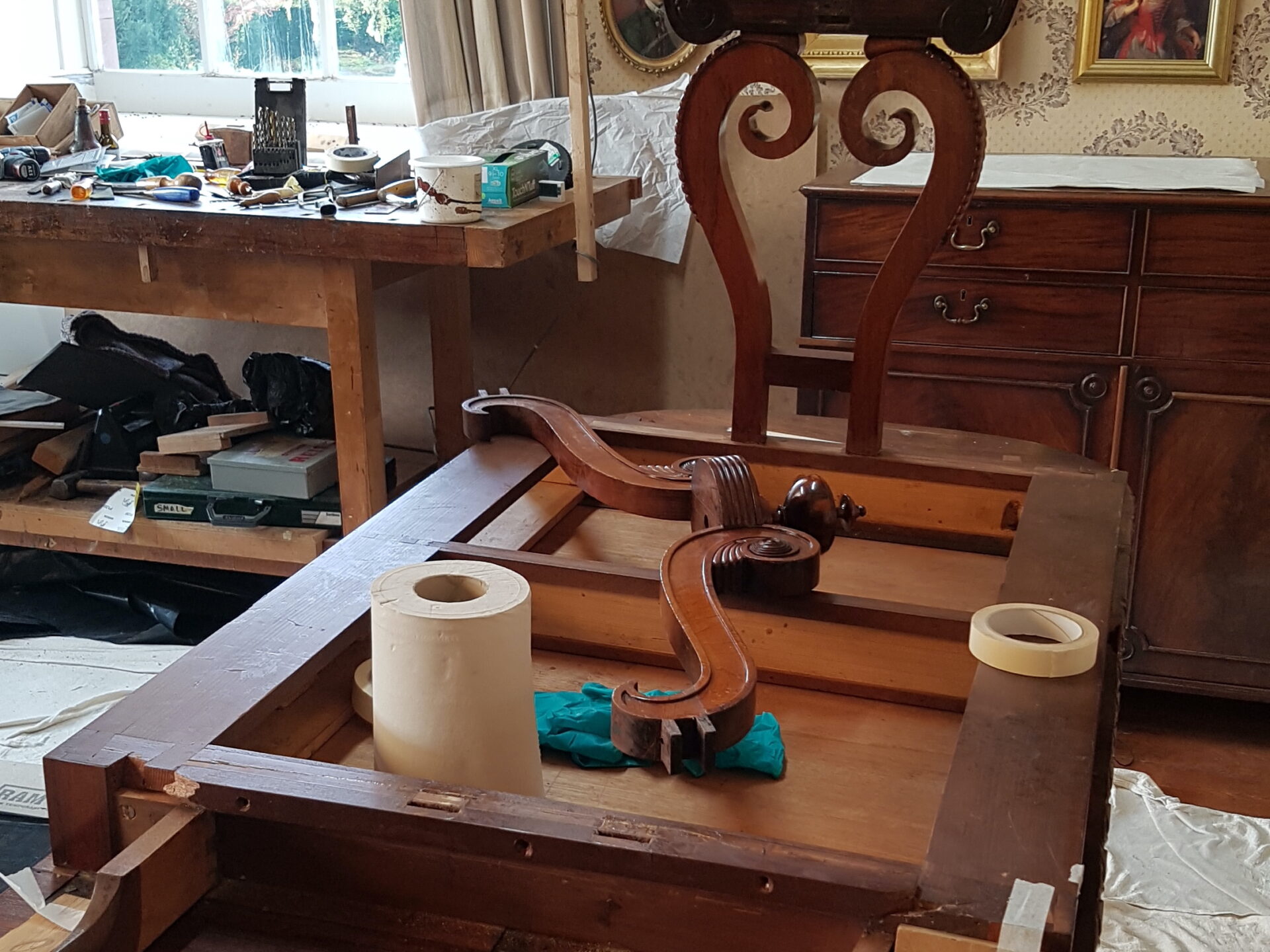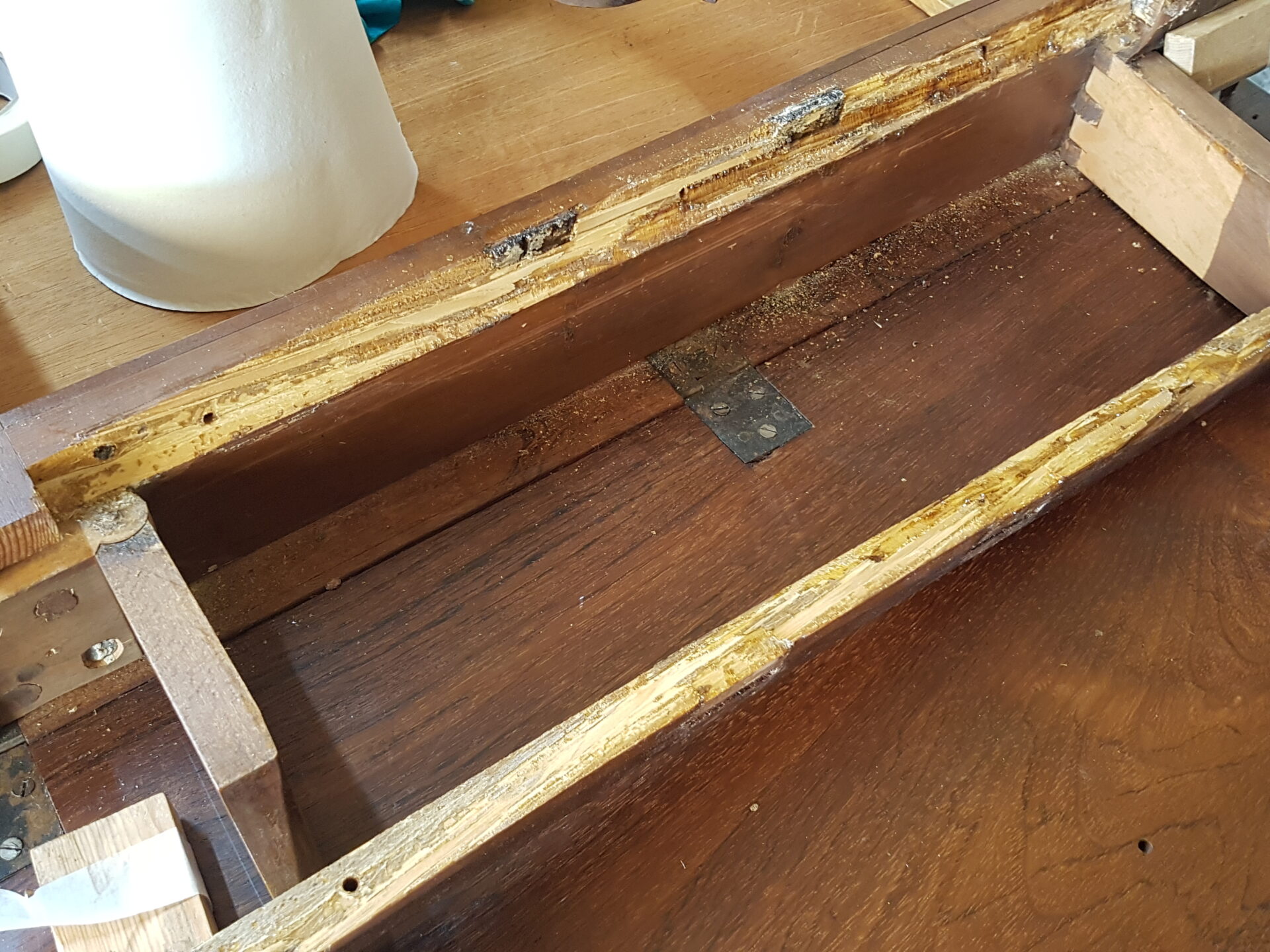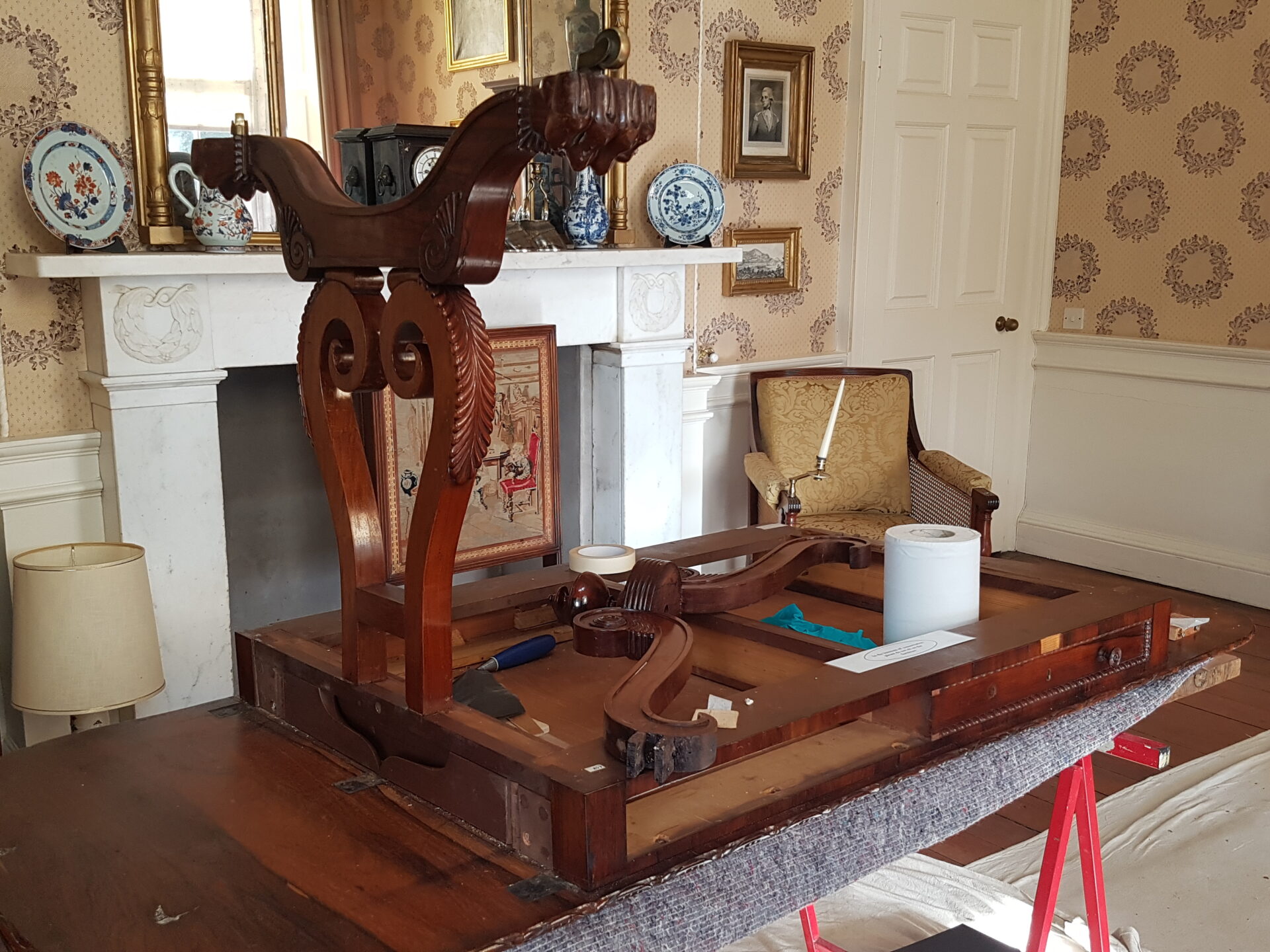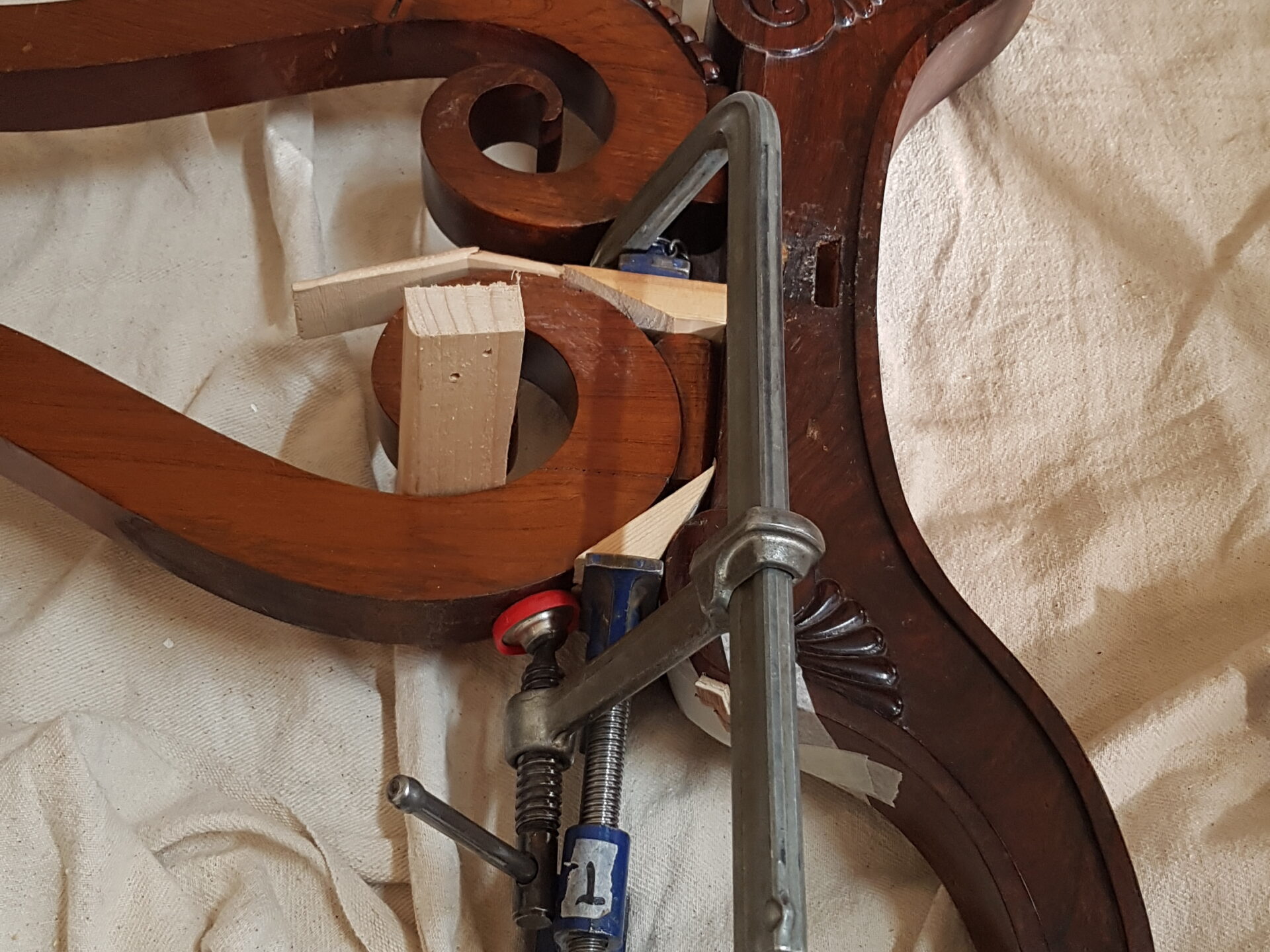
Conservation: Sofa Table
William Trotter (1773-1832), Sofa Table, 1814
Rosewood, mahogany, pine, and brass fittings
The sofa table was made for the Regency extension to Paxton House. The extension was built to the designs of King’s architect to Scotland, Robert Reid, and furnished by Scotland’s most outstanding cabinetmaker, William Trotter, to house the inherited art and book collections of Patrick Home. The sofa table is one of Trotter’s greatest masterpieces of design and carving. It was commissioned by Nancy Stephens and George Home for the new Library and is made of rosewood which was extracted at the time from Brazil by enslaved people clearing tropical rainforest for plantations.
Accredited furniture conservator, Tim Phelps, worked on this table deconstructing it and carefully re-enforcing it supported by grants from The Leche Trust, The Pilgrim Trust, and Museums Galleries Scotland.

Stretcher
The lower supports for the table had been repeatedly repaired in the past (prior to ownership by The Paxton House Trust) and were very unstable. The stretcher of the sofa table is particularly finely worked with scrolling supports meeting at a turned urn in the centre. Old repairs on the scroll ends of the stretcher were strengthened and improved before being reattached to the legs.
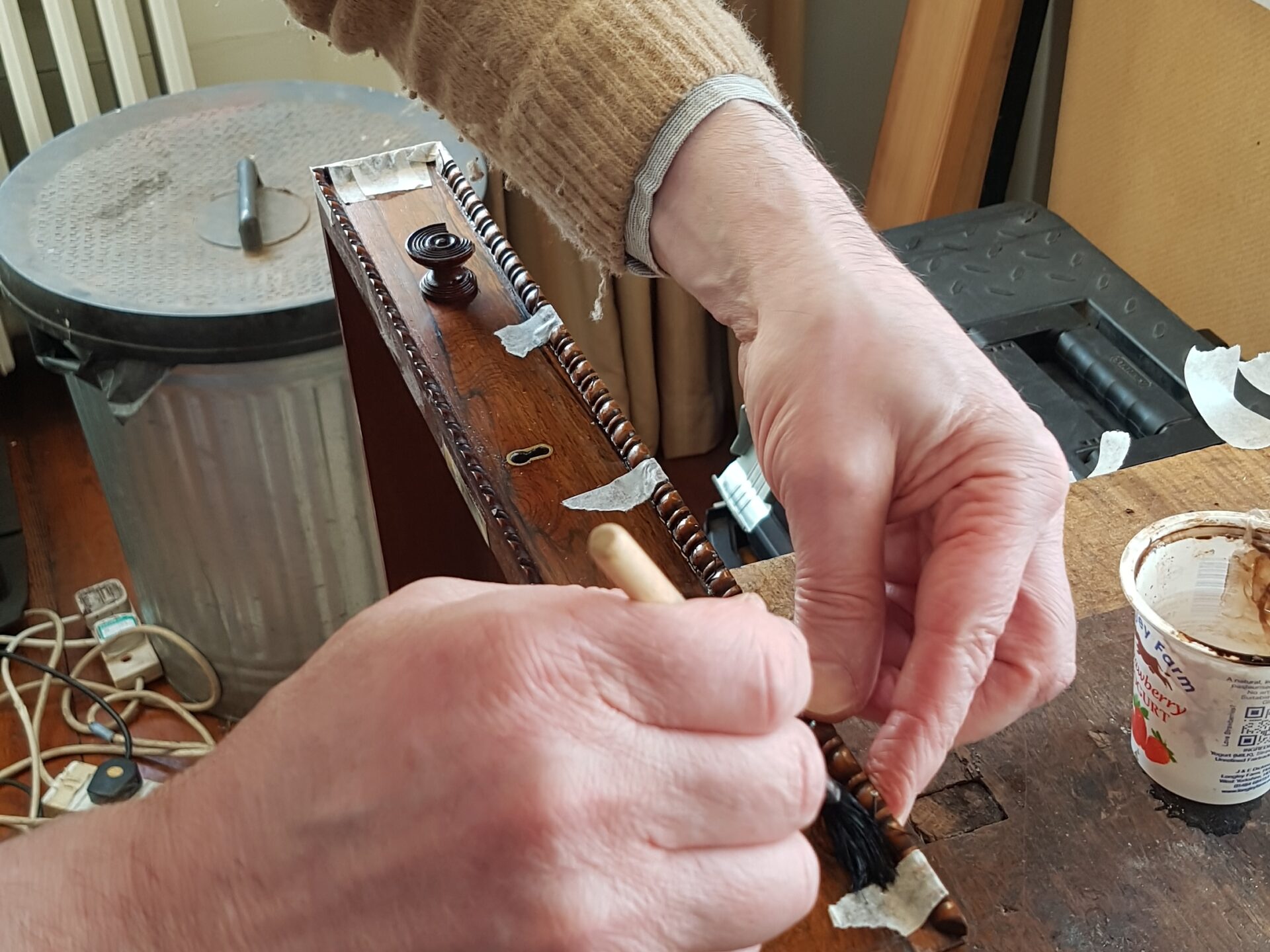
Drawers
The ‘cotton reel and bead’ mouldings, typical of the Regency period, were reattached to the drawer edges using traditional Scotch glue. Scotch glue is used hot and Tim Phelps also heated the body of the drawer before applying the glue, working quickly before the glue sets. He is confident that the repair will last for the next 200 years. In late 2022, Accredited furniture conservator, Fergus Purdy supported the previous restoration work by repairing and re-instating missing sections of the knob handles on the drawers of the sofa table. His work was funded by Museums Galleries Scotland.

Significance
George Home inherited Ninian’s plantation, Waltham, in Grenada in 1795 and spent huge sums of money rebuilding it after Fédon’s Uprising. However, recent research has shown that the sums of money expended on this furniture by Trotter and the extension were not derived from the profits of slavery. We now know that the first income George received from Waltham estate was £100 in 1815, a year after the Picture Gallery was completed. Trotter charged £23.10s for this table in his 1814 invoice; equivalent of around £1,450 in 2022, however, it would cost a great deal more for the equivalent table to be made today.
This table was in a perilous state prior to this urgent and extensive, grant-funded conservation work in 2021 and 2022. The whole table rocked at the slightest touch, and it was ready to split, and it had to be removed from display.
